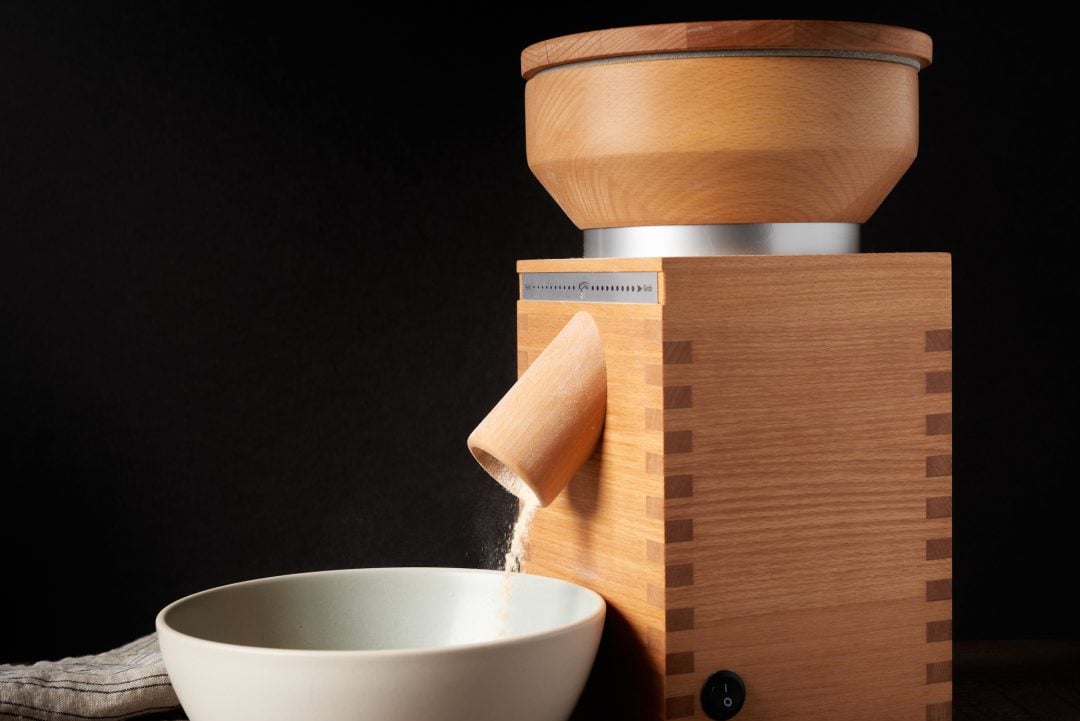Baking with freshly milled flour has been a part of my sourdough bread-making for almost as long as I’ve been a baker. Fresh flour—whether from a heritage grain, ancient grain, or a modern grain—brings a wallop of fantastic flavor, aroma, and color to any bread. And with modern countertop electric mills available to home bakers, milling flour takes just minutes in the morning before you begin mixing.
At a high level, these are the reasons that I love baking with freshly milled flour:
- Increased flavor, aroma, and color
- Increased nutrition
- Convenience (you can keep berries indefinitely, and then mill them when needed, whereas flour lasts 6 to 12 months)
- Economical (whole berries are typically cheaper than flour)
In this guide on how to freshly mill flour at home for baking, we’ll first look at what milling is, then talk through each step of how to mill your own flour, and finally dig into practical advice for working with it.
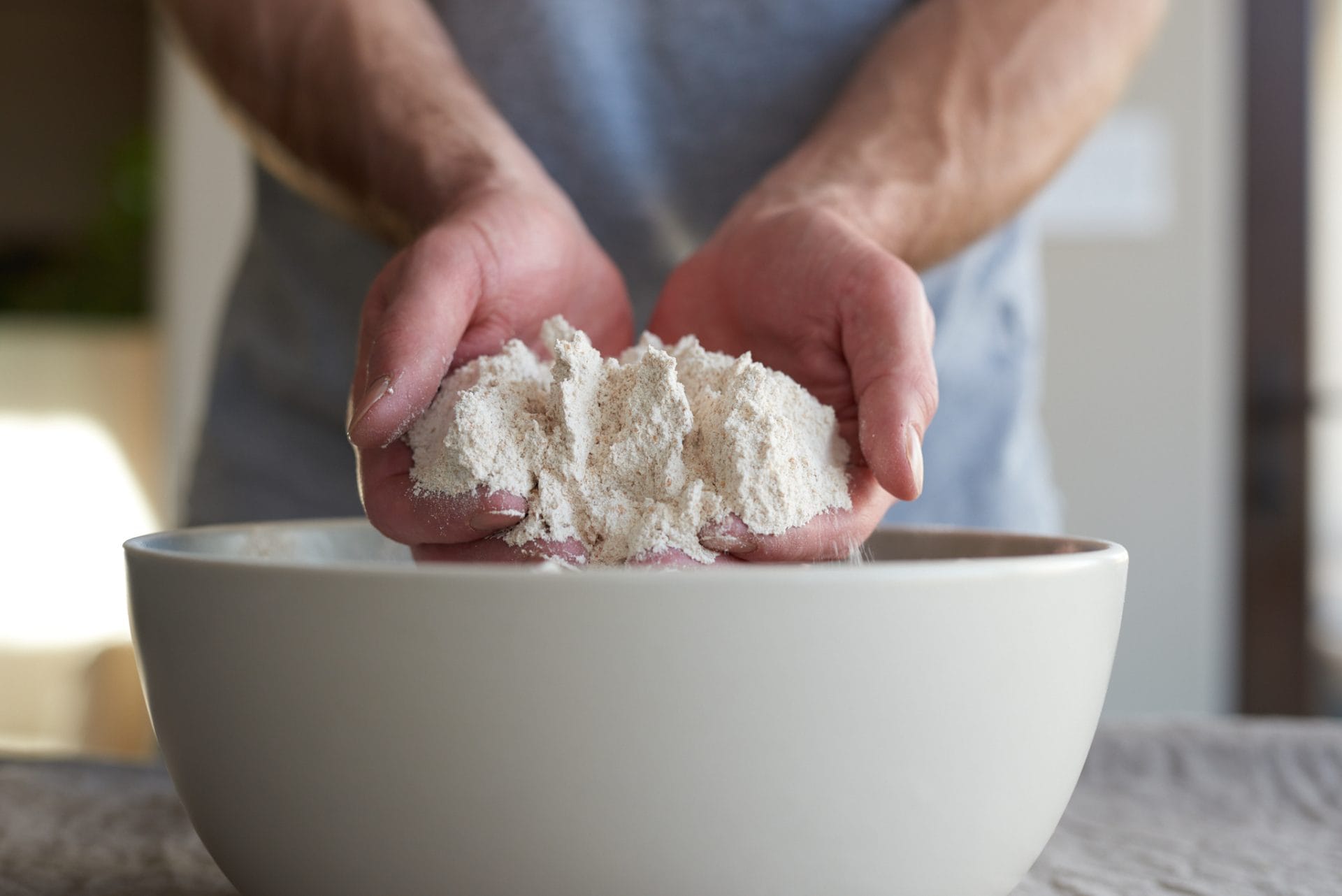
What is freshly milled flour?
Freshly milled, or freshly ground, flour is grain that has recently been milled. I think every baker and miller has a different definition for what they consider to be fresh flour (sometimes called “green flour”), but for me, it’s flour that’s milled either the day I’m using it or the day before. To me, it’s just as convenient for me to mill all the flour I need for the day’s bread first thing in the morning, or the night before if the levain calls for fresh flour, so there’s no need for me to mill a large quantity and keep it stored in the pantry.
For me, freshly milled flour is flour that’s milled within a few days of its use.

The milling process is when grain berries are ground between burrs, stones (for stone-milled flour), or rollers into a powder, and the result is flour. A grain berry is composed of a protective outer layer called the bran; starches, gluten proteins, and arabinoxylans contained in the endosperm; and the germ, which is what would sprout into a new plant (given the right environment). During milling, a portion of the starch granules are damaged, allowing for better water absorption, increased fermentation activity, and ultimately facilitates the creation of a viscoelastic dough for bread making.
The professional miller, or someone with the appropriate equipment, can measure and control the amount of starch damage incurred when milling (related to the genetics of the grain, protein content, and the grinding action of the mill). Consistent starch damage ultimately leads to consistent water absorption and fermentation that’s not too active yet not too sluggish (the more starch damaged, the more sugars are available for fermentation by yeasts and bacteria, and the faster fermentation proceeds). For the home miller, the goal is to mill as fine as possible to ensure sufficient (although maybe not optimal, if there is such a designation) starch damage for active fermentation and appropriate dough consistency.
What are the benefits of freshly milled flour?
I find freshly milled flour to have an enriched aroma and an amplified taste, and it adds a desirable color to bread’s crust and crumb. It’s hard to quantify, but the aroma is intense, and depending on the grain, a little grassy, nutty, and with notes of cream. And the flavor is nutty, sweet, and rich, and depending on the variety, it can be extremely vivid and forward (Red Fife is a good example).
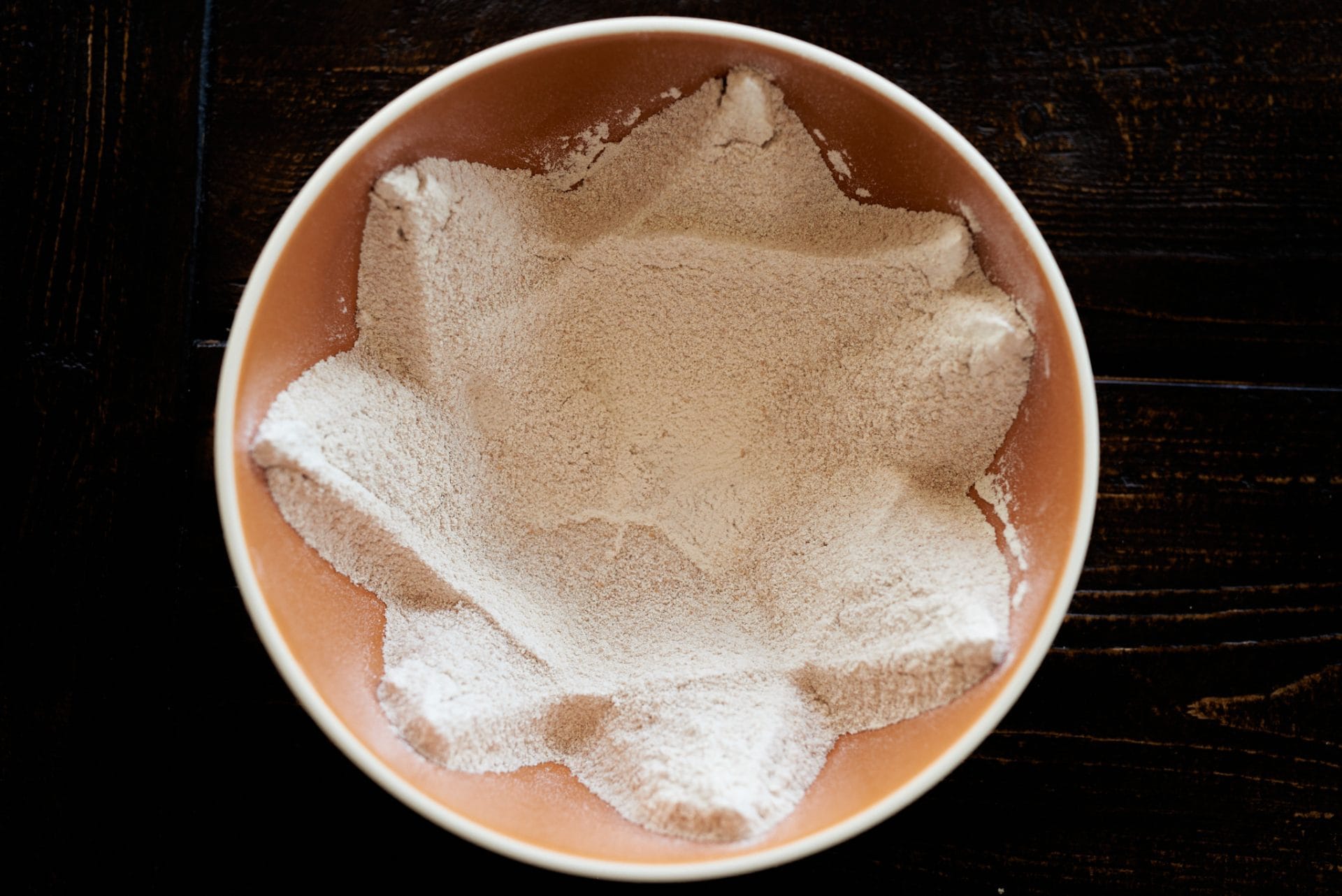
I like to equate freshly milling your flour to freshly grinding coffee beans before making a cup; you unlock another level of flavor, freshness, and aroma that’s inherently in the food but hard to describe without trying it for yourself.
Is freshly milled flour healthy?
While it can be difficult to determine if freshly milled flour is more nutritious than aged whole wheat flour, using whole grain freshly milled flour is certainly healthy in that we’re making bread with whole grains—the entirety of the grain berry—thus bringing along all the nutrients, vitamins, fats, fiber, antioxidants, phytochemicals, and essential minerals (magnesium, selenium, and copper) our body benefits from.
Speaking of fiber and healthy ingredients, check out my whole-grain and high-fiber seeded sourdough bread for a pan loaf that’s as delicious as it is healthy.
What are the drawbacks of freshly milled flour?
I’ve found baking with freshly milled flour requires a slightly different approach to baking bread. Typically, using whole grain freshly milled flour results in a dough that’s not quite as elastic and strong as one made with aged flour. This doesn’t mean you should mix the dough less or be more delicate; it simply means you need to adjust your expectations when using fresh flour. Instead of expecting a loaf with huge volume and a wildly open crumb, expect a squatter loaf with a tighter interior. But! When you might sacrifice in terms of volume, you’ll gain back (doubly?) in flavor, texture, and aroma.
Fresh milled vs. store-bought flour
Milling fresh flour at home is very different from professional large milling operations. At home, flour is typically milled in a single pass. Depending on their milling method, a large miller might successively crack (or crush) the berry in a long process of increasing fineness to ensure optimal bran, germ, and endosperm separation. They want such separation so that they can produce types of flours by holding back or including bran and germ for whiter or darker flour, respectively.
Additionally, store-bought flour is typically aged for several weeks or more between milling and selling. Aging (also called maturing) flour gives it time to oxidize, which can help result in a stronger, more elastic dough. But, using flour shortly after milling doesn’t always result in a loaf with a lack of volume, desirable texture, or increased flavor—in my experience, it’s just the opposite (more on this in a moment).
Should I sift freshly milled flour?

Sifting is the process of using a screen (like a fine-mesh sieve from the kitchen) to remove some portion of the bran and germ from the flour, leaving only the starchy endosperm (which mills to a finer consistency) in the flour. Depending on the fineness of the screen, more or less bran and germ will be sifted away, resulting in flour that’s higher extraction (such as whole wheat flour), lower extraction (such as white flour), or somewhere in between. Essentially, the more you sift freshly milled flour, the “whiter” the flour becomes.
Many different sifting screens can be purchased online, and these particular screens come in 40-mesh and 60-mesh varieties. The 60-mesh is finer than the 40 and will result in more bran and germ sifted away, resulting in whiter flour. Korin also has a high-quality sifting screen with various inserts.
What is bolted flour?
Sometimes when talking about freshly milled flour and sifting, you’ll hear the term “bolted flour” or “bolting” used in the same context. Bolting is the same as sifting in that you use a screen to remove some portion of the bran and germ from the flour (the amount depends on the sifting screen’s fineness).
How do I sift my flour?
Place your sifting screen over (or inside) a large metal bowl. Then, pour the freshly milled flour on top and shake both the bowl and screen to encourage the finer bits to fall through the screen. Continue doing this until it looks like only the large bran and germ are left on top of the screen.
How can I make high-extraction flour?
You might see some recipes call for high-extraction flour, which is flour that falls somewhere between typical white flour and whole wheat flour. You can use a sifting screen (as described above), to sift out some portion of the bran and germ and use the resulting flour anywhere “high-extraction flour” is called for. Either the 40 or 60-mesh screen will work well to sift, depending on how white you want your flour. The bran/germ pieces that are sifted away can be used to top your dough after they’re shaped.
How to freshly mill flour at home for baking bread
A step-by-step to milling the finest fresh flour at home:
- Empty the electric grain mill of berries.
- Turn the mill on and set the grind as fine as possible until you just hear the burrs begin to touch, then quickly set the mill to one setting coarser.
- Pour the whole grain berries into the hopper.
- If desired, quickly set the mill to one grind level finer.
Depending on the speed, capacity, and specifications (burr size, motor speed, etc.) of my grain mill and how much flour I’m looking to mill at one time, I might give the mill a rest halfway through milling to allow it to cool so that it doesn’t overly heat up the flour. One tip for alleviating this issue somewhat is to store whole berries for milling in the freezer. The berries’ cold temperature helps offset the heat generated by the milling process. In most cases, I mill 1 to 2 kilograms of flour directly without rest.
Note: it’s best to not let the mill run excessively without any berries being milled if you hear the burrs rubbing.
See the end of this post for some recommendations on grain mills for purchase and where to buy grain berries.
How finely should I mill my flour?
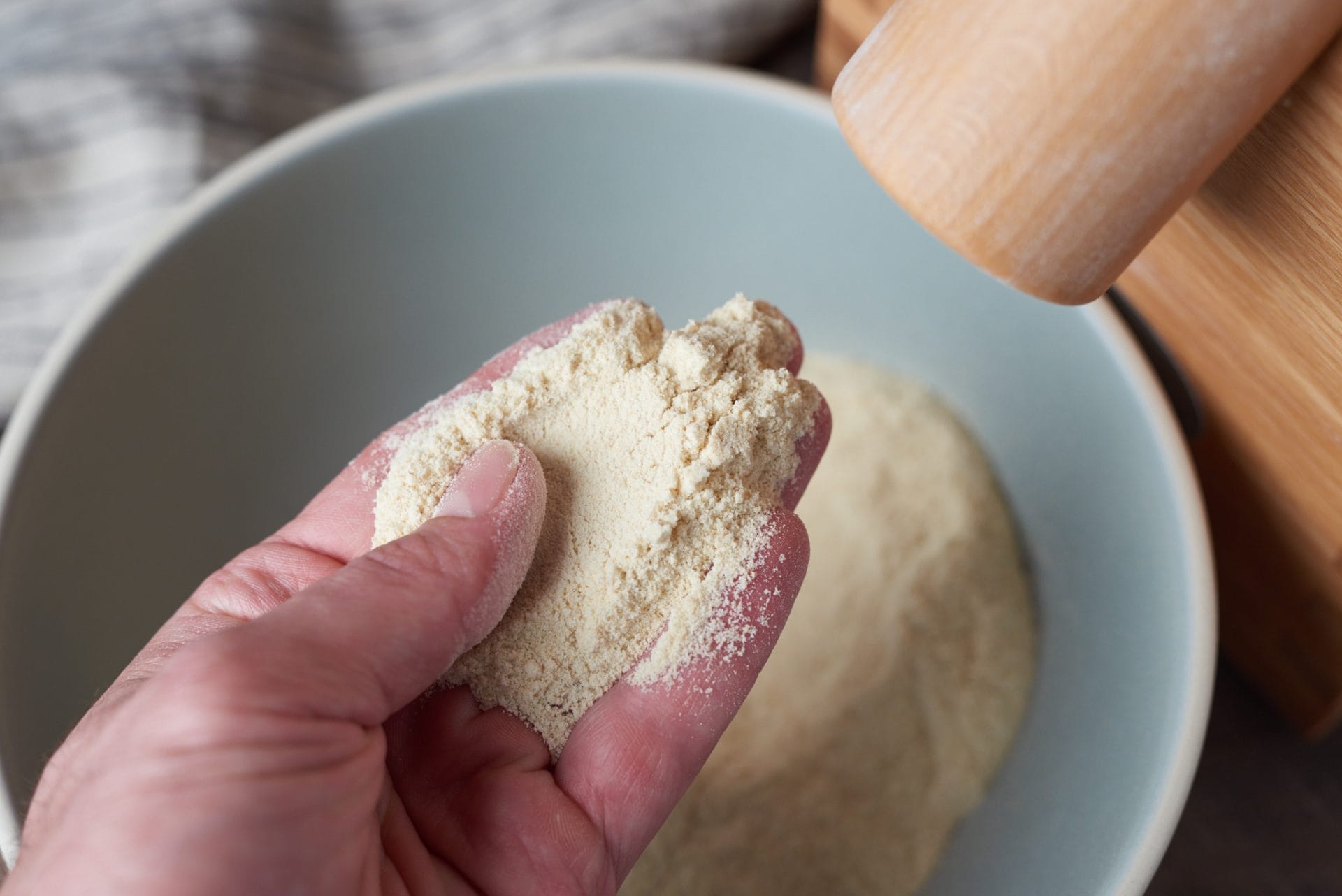
As discussed above, starch damage that occurs during the process of milling is important. To look at an extreme case, imagine if a wheat berry wasn’t milled at all: the protective outer bran layer would allow little (or no) moisture into the berry, and the sugars (starches) contained therein wouldn’t be available for fermentation, which would be essentially nonexistent. Milling pulverizes the berry to make flour that is readily fermentable by the wild yeasts and bacteria in our sourdough starter and levain. But in addition to this, in my experience, milling finely produces flour that has better baking characteristics: dough that’s more elastic and extensible, smoother, and with ample gas-trapping capability.
When I want to bake with freshly milled flour, I prefer to mill as finely as possible.
There’s also another approach to fresh milling. The grain can be milled on a fine setting but not too fine. In this way, the bran and germ parts of the berry are left more whole, and you then easily bolt or sift them out, leaving a “whiter” flour. If the mill is set to the finest setting, the bran and germ get pulverized and will be at the same granularity as the rest of the wheat berry. With the bran and germ left more whole, they can then be boiled and then reintroduced into the dough later–as I do with my whole wheat sourdough loaves–used as a topping, or used in another application in the kitchen (cookies, muffins, or even cakes).
When I bake with freshly milled flour, I prefer to mill it as fine as my mill can possibly go and use all of the fresh flour produced. In other words, if I’m going to mill fresh flour, I almost always skip sifting or bolting—I want the whole nutrition of the wheat berry!
How to mill “hard” grain
Some grains, such as Khorasan (Kamut) or even durum, are harder (as in, the berry is a tougher consistency) than others. When milling these berries, it may be beneficial to set the electric mill to a fine grind level, but not the finest, and mill the grain. Then, set the mill to the finest level, and pass the coarsely milled grain through the mill a second time. This two-pass milling will help reduce the heat generated by the mill (believed by some to decrease nutritional content) and should result in finer flour. I also find it helpful to be sure to store hard grain in the freezer since the cold temperature will help offset any heat generated by the mill.
Cracking grains or cereals for bread
Some recipes at The Perfect Loaf, like my soft honey buckwheat sandwich bread, call for grain (or cereal) to be cracked and soaked or cracked and cooked into a porridge. A home flour mill can crack grain by simply setting it to the coarsest, or near-coarsest, setting and giving your grain a pass through the mill. Chances are, your mill will also produce a lot of middlings and fines along with the larger cracked bits, and if desired, you can sift the larger pieces out, though I typically use everything that comes out of the mill.
Making bread with freshly milled flour
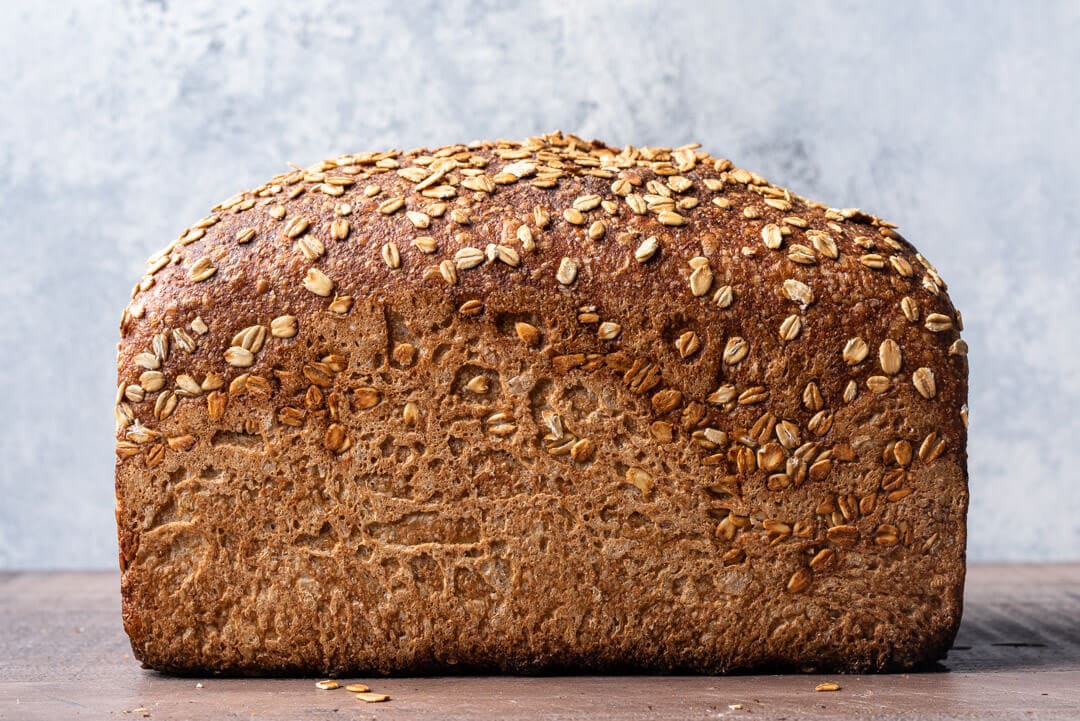
How to adjust dough hydration when baking with freshly milled flour
When using flour I’ve milled myself, I find I almost always have to increase the hydration of my recipe to achieve a dough with the same consistency as when made using aged flour (as is the case with my wheat and spelt pan loaf shown above). Whether I’m using hard wheat or soft wheat or a different grain altogether, I find that fresh flour tends to absorb more water than aged.
How much more water do you need to add when using freshly milled flour? Unfortunately, there’s no single answer. As is always the case with flour, recipes are a good guideline, but ultimately you will need to make adjustments in your kitchen during mixing. This is one reason why I typically call for holding back some of the water when mixing (and why I often label them as Water 1 and Water 2). Holding back a little water initially helps you add it in slowly during mixing if it looks and feels like the dough can handle the addition.
How to mix and strengthen bread dough with freshly milled flour
Flour that’s been milled and left to age (the amount of time is variable)—which is the majority of flour used in baking and all of the flour you’ll find in a regular supermarket—typically results in a dough that’s stronger, has better mixing tolerances, greater gas-trapping ability, and ultimately, it can produce bread with more volume.
One of the driving factors behind this is oxidation (oxidization), which promotes a stronger gluten network in the dough. Freshly milled flour that’s used shortly after milling will not be as oxidized as aged flour, and thus typically results in a weaker dough that has reduced volume and gas-trapping capability. To help alleviate this situation, mixing for additional time can help oxidize the dough to create a dough that’s more elastic and with increased gas-trapping characteristics.
How much longer should you mix your dough that’s made with freshly milled flour?
It’s hard to give an exact time because there are so many variables that can affect a dough. If using a mechanical mixer, I’ll typically mix for 2 to 3 minutes longer for my typical sourdough bread, but if hydration is very high it may require more. My best advice is to test mixing and developing the dough to varying degrees, while keeping everything else in the recipe as consistent as possible, and measure the outcomes. It may help when doing these tests to shoot to the extremes; for example, if you mix a freshly milled flour dough for 3 to 4 minutes, next time try doubling that and mix for 8 minutes, just to see the upper bound, and measure the result.
When working with freshly milled flour, you can mix your dough by hand or with a mechanical stand mixer (like a KitchenAid or Famag) just the same. When mixing by hand, I prefer to use the highly effective slap and fold technique, but techniques such as the Rubaud method, or simply folding the dough directly in the mixing bowl, will all work to the same effect. At the end of mixing, you want a dough that’s cohesive, smoother, and elastic. It does not need to pass the “windowpane test,” especially if you are planning to do stretches and folds during bulk fermentation, but it should not be falling apart or very shaggy. I like to say it should reach a medium development.
Which grain mill should I buy?
There are many great grain mills available to the home bread baker. The choice of which mill is best depends on your situation: how much flour do you want to mill at a time? Do you want an electric mill for convenience and speed, or do you prefer to hand-mill your flour for the finest flour possible?
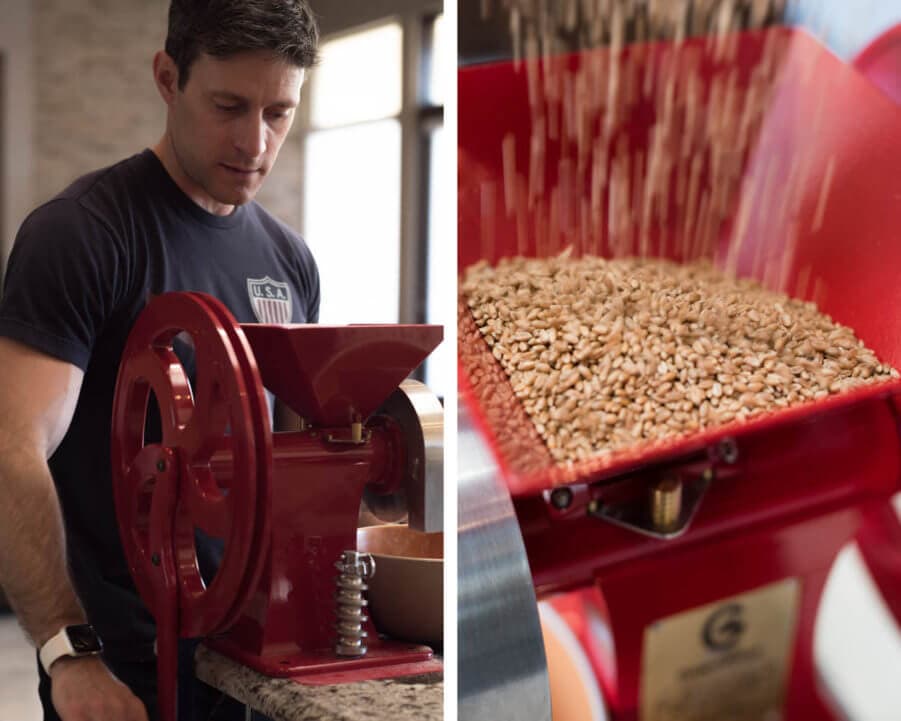
Regardless of your preference, any of the following mills will serve you well—they have for me over the past decade!
Mockmill
A fantastic mill brand that produces wonderfully fine flour at the flip of a switch, Mockmill has several mill with different specifications to accommodate a range of outputs depending on how much flour you’re looking to produce. See Mockmill’s home flour mills.
KoMo Classic
I’ve had the KoMo Classic for ages and have used it to mill countless kilograms of flour here at home. It has a solid housing made of wood, and the design is, well, classic. It mills very fine flour at a reasonable rate.
GrainMaker 116
The GrainMaker is a hand-operated mill with two large steel burrs. It’s a bit of work to turn the crank, but it produces the finest flour out of all the mills I have. The mill is built like a tank and is truly a piece I’ll end up passing down to the next generation.
Where to buy whole grain berries for milling near me
You can find whole berries at a surprising number of locations, and of course, you can always order large bags online. The sources listed below are some of my favorites, though I encourage you to look around your area for local sources–you may be surprised at what you find!
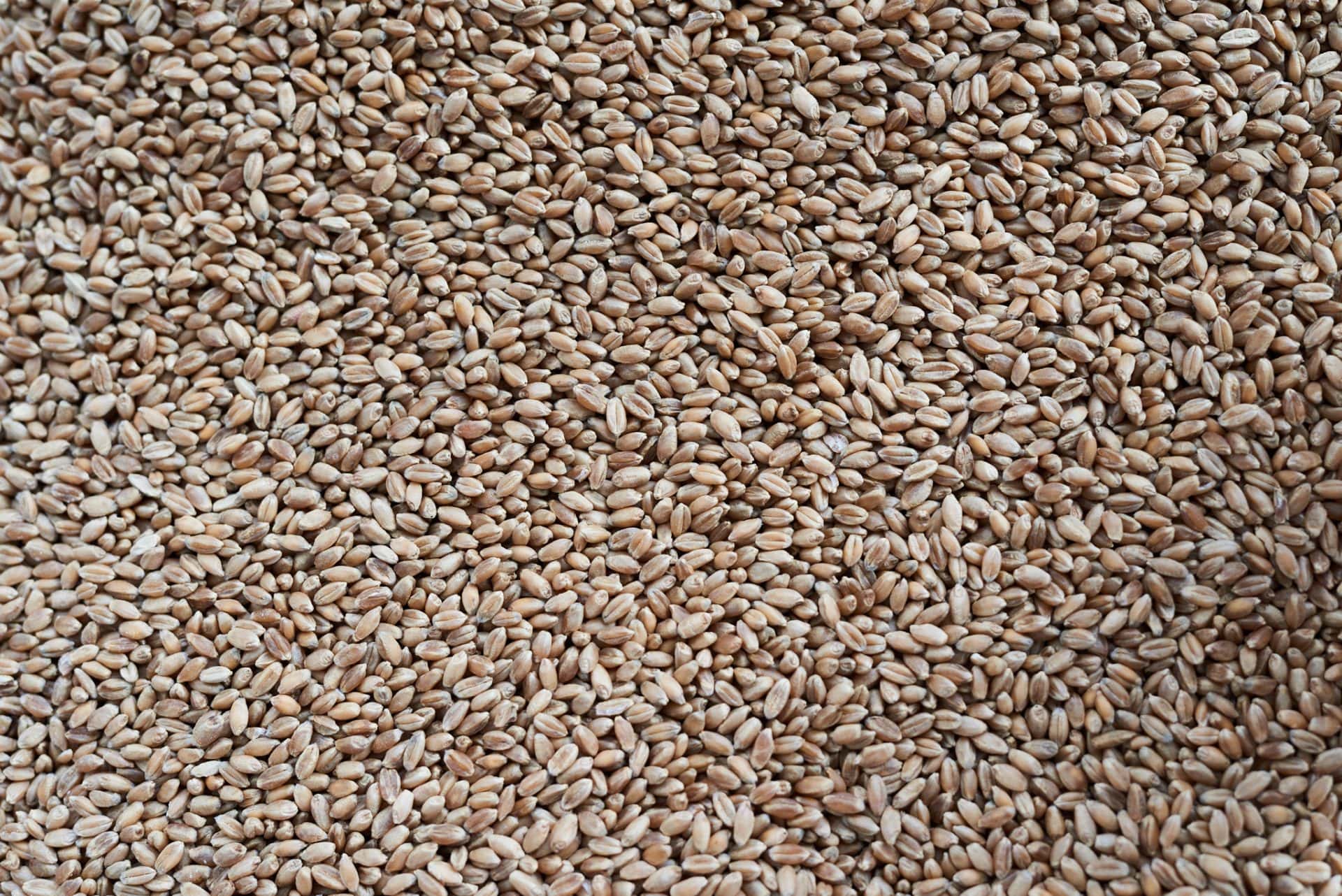
Note that you can also purchase freshly milled flour from these companies. While it can sometimes be hard to determine just how fresh flour is unless you mill it yourself, the flour I purchase from the following places is always high quality. If you want to give working with fresh flour a try before you invest in a mill, these are good places to start.
| Source | Location | Product |
|---|---|---|
| Barton Springs | Southwest USA | Heritage grains, both whole berries, and fresh flour |
| Bellegarde Bakery | South USA | Freshly milled flour and southern specialties |
| Cairnspring Mills | Northwest USA | Special varieties and high-extraction flours |
| Carolina Ground | South USA | Wide variety of freshly milled flour |
| Central Milling | Midwest USA | Wide selection of whole wheat (hard white wheat and hard red wheat, specifically), spelt, rye, and other berries |
| Grist & Toll | West USA | Heirloom varieties freshly milled |
| Hayden Flour Mills | Southwest USA | Freshly milled flour and whole berries |
| Janie’s Mill | Midwest USA | Freshly milled flour and whole berries |
| Maine Grains | Northeast USA | Stone-milled fresh flour |
Frequently asked questions about flour milling and working with freshly milled flour
How do I store whole grain berries used for milling?
I store whole berries in the freezer wrapped tightly in plastic to prevent the accumulation of odors from the freezer. Storing whole berries in this way can help keep them longer before spoiling. Because whole grains have their bran layer (which is the protective sheath around the entire berry) intact, they can last a very long time (a year or more) if kept dry and at cool room temperature. Placing the berries in the freezer helps extend the shelf life even further–perhaps indefinitely.
One additional benefit of storing grain in the freezer is that the berries are cold when it comes time to mill, which offsets the mill’s heating effect during its operation. The result is flour that’s cooler after passing through the mill, which can help preserve flavor and nutritional value.
How long can I store freshly milled flour?
Like whole grain flour, freshly milled flour spoils faster than white flour, which has had the components that most readily spoil—the bran and, most importantly, the germ—removed. Because whole grain flour includes the entire wheat berry, it’s best to use it within about six months. For freshly milled flour, I like to use it within a week of milling.
Does fresh flour need to be refrigerated?
If you freshly mill flour and decide not to use it that day or within a few days, yes, you should refrigerate it to help preserve its flavor, aroma, and nutrition. Be sure to put it in an airtight container before you place it in the refrigerator. If you don’t have space in the refrigerator, store the flour at cool room temperature in a dark and dry spot.
Do I need to rinse or wash whole grain berries before milling them?
In most cases, no, as long as your source has cleaned the grain for you (which is almost always the case unless you received grain directly from a farmer from the field). All of the grain I’ve purchased has been clean and free from debris. If you’re unsure, you could ask your miller or farmer if they’ve cleaned the grain in any way.
Can I use freshly milled flour in my sourdough starter?
Absolutely. I go through periods where I’ll switch to using freshly milled hard red wheat in my sourdough starter maintenance routine. Typically, I will mill once on the weekend and make enough flour for the week’s refreshments. You can store the fresh flour in a cool, dark spot in the pantry just like any other flour.
Using fresh flour in my starter or levain adds a wonderful aroma and a different flavor profile, which ultimately will change the final bread made with the starter. That said, I still like to use some aged white flour to refresh my starter even when using freshly milled; typically I will use at least 50% aged white flour mixed with 50% freshly milled. This is simply a personal preference; I like that I can still see some strong signs of fermentation from the fresh, while the aged white flour will allow for ample rise and gas-trapping ability. Additionally, it means I don’t have to use quite so much freshly milled whole wheat flour at each refreshment.
Why does freshly milled flour need more water?
Since we mill the entire berry, the flour contains all of the bran and germ, both of which absorb significant amounts of water. So you need to adjust the hydration to accommodate for that increased absorption. In addition, I typically find that fresh ground whole grain flour tends to need more water than aged whole grain flour.
Why does my bread dough overproof when I bake with freshly milled flour?
If you’re not sifting your flour, freshly milled flour is whole grain, meaning 100% of the grain berry that goes into the mill is used to mix the dough. Typically, with higher whole grain percentages, fermentation activity will also be increased.
What’s Next?
See my freshly milled flour area at The Perfect Loaf for a roundup of all my favorite recipes here that use fresh flour. In addition, here are a few of my favorites recipes using fresh flour:


